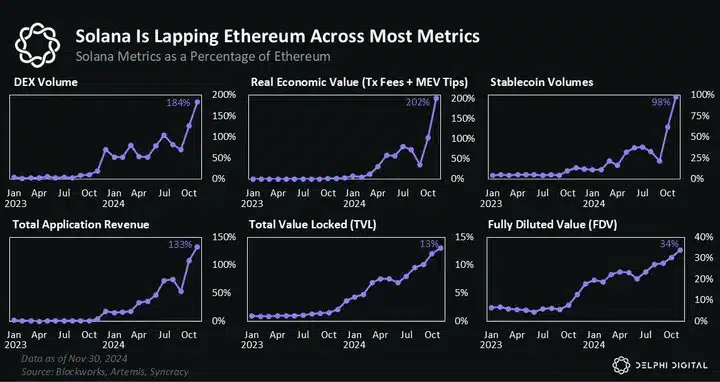Ethereum vs. Solana: A Tale of Two Blockchains
In the world of decentralized finance, there’s an epic showdown shaping up between two heavyweights: Ethereum and Solana. At the center of this clash are two fundamentally different visions of what a blockchain must be. Ethereum is within the technique of reinventing itself, specializing in security and a multi-layered approach. Meanwhile, Solana is all about pushing a single, ultra-fast chain to its very limits. This is not only about grabbing market share; it is a debate concerning the way forward for blockchain technology itself, and up to date updates from each camps have made the battle lines clearer than ever.
Two Visions for a Decentralized Future
To grasp this rivalry, it’s worthwhile to understand their distinct architectures. Ethereum is overhauling itself to turn out to be a “modular” system, aiming to be a solid foundation for other chains like Arbitrum and Optimism to construct on top of. Imagine it as a robust base where other, more agile chains handle the short, day-to-day transactions. The recent Dencun upgrade was a large leap on this direction, introducing “blobs” to make transactions on Layer-2s significantly cheaper.
As you would possibly expect, these advancements, coupled with ETF inflows, have had a noticeable impact on Ethereum’s market value. At last check, the cryptocurrency was nearing $4,000, having surged by 165% in only a couple of months.
Source: TradingView
On the flip side, Solana takes a radically different approach. It combines all the things into one high-speed layer, arguing that a single, well-tuned chain is the important thing to achieving the speed needed for widespread adoption. Thanks to its unique Proof-of-History (PoH) mechanism, Solana can handle a large volume of transactions concurrently, allowing applications to interact easily without the cumbersome bridges needed in Ethereum’s ecosystem.
While Ethereum’s modular path provides top-tier security for its Layer-2s, it may also result in fragmentation and a somewhat perplexing user experience with multiple networks. Solana’s integrated design offers a seamless and cost-effective experience, but running it requires hefty hardware, and the network has a history of unexpected outages.
Money vs. People: The Metrics Battle
When it involves financial heft, Ethereum still reigns supreme. Its Total Value Locked (TVL) is a testament to its deep-rooted trust and legacy as the primary major platform within the space.
However, Solana is making waves by way of user activity. By May 2024, more people were engaging with Solana each day than Ethereum, drawn in by its minuscule transaction fees. Solana’s infrastructure is built for top activity levels. Throughout 2024, it facilitated 81% of all decentralized exchange trades and 64% of NFT mints across all chains.
For a protracted time, Ethereum was the go-to option for developers. But that is changing.
A report from Electric Capital in late 2023 revealed that Solana was attracting more recent developers than Ethereum for the primary time. While Ethereum still boasts a bigger, more seasoned talent pool, Solana’s high-performance Rust environment is proving irresistible to recent developers, especially in Asia.

Source: Delphi Digital
Challenges: Outages and Fees
Each blockchain’s core design comes with its own set of challenges.
Solana’s relentless pursuit of speed has led to some notorious network crashes, raising concerns about its reliability. A brand new validator client, Firedancer, developed by Jump Crypto, goals to deal with these issues by making Solana more robust and able to processing over one million transactions per second while reducing its fragility through diversified software.
Ethereum, then again, faces issues with congestion and high transaction costs, often called “gas fees.” During peak times, these fees can soar, making it less accessible for on a regular basis users. Although Layer-2 solutions are addressing these issues, the high costs on the primary chain have long been criticized and exploited by competitors.
In terms of decentralization, the image is mixed. Ethereum boasts over one million validators, although a good portion of the stake is concentrated in a couple of liquid staking pools like Lido. Solana has fewer validators (around 3,200) attributable to its high hardware requirements, raising different centralization concerns.
The Real-World Impact: NFTs, Gaming, and Beyond
DeFi is not an isolated phenomenon. Real growth is driven by culture, encompassing digital art (NFTs), gaming, and real-world applications (DePIN) that attract recent users.
Ethereum’s major NFT projects have created a community of collectors who then need platforms to trade and leverage their art, fueling its financial ecosystem. Solana’s low fees have made it a hotspot for high-volume NFT marketplaces and breakout games like STEPN, whose users naturally gravitate toward Solana’s DeFi tools.
A project called Helium even migrated its entire wireless network to Solana, turning nearly one million hotspots into NFTs and demonstrating how real-world hardware can seamlessly integrate with blockchain-based financial systems.
So, Who’s the Winner? It’s Complicated.
The Ethereum vs. Solana debate is evolving from a winner-takes-all battle to a recognition that every blockchain serves different purposes. Ethereum is establishing itself because the secure, decentralized backbone of the economic system—a settlement layer for high-value transactions and a world of Layer-2 solutions.
Solana, particularly if Firedancer lives as much as its guarantees, is positioning itself because the go-to platform for real-time activities—trading, social media, and gaming.
As technology continues to enhance, allowing users and capital to maneuver seamlessly between chains, declaring a single winner becomes unnecessary. The real victory lies in having options. We’re moving toward a future where different blockchains excel in several areas, offering users a financial web that is quicker, cheaper, and more open than ever before.
Image Credit: eng.ambcrypto.com
